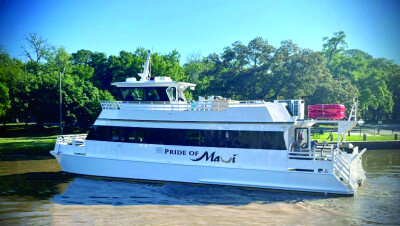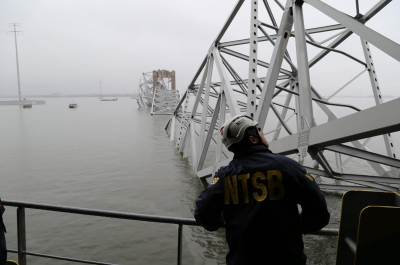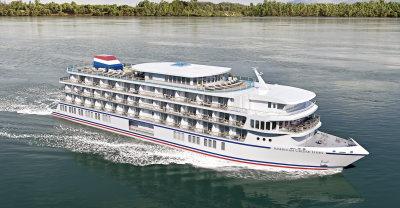A new report that looks at investment needed to improve freight transportation underscores the importance of using marine highways and inland ports as part of a national intermodal transportation network.
“Containers are only one important aspect of a much bigger picture impacting ports and coastal states,” according to "The State of Freight II" report, released Tuesday by the American Association of Port Authorities (AAPA) and the American Association of State Highway and Transportation Officials (AASHTO). “Interior ports continue to transport and support tremendous movements.”
The report comes one year after Congress passed the FAST Act (Fixing America’s Surface Transportation) which for the first time made dedicated freight funding a priority and authorized $11 billion in spending on multiple transportation modes.
The report seeks to be a “blueprint for state DOTs, Congress and the new [Trump] administration to address the critical freight infrastructure needs of our nation,” AASHTO President and MaineDOT Commissioner David Bernhardt told reporters in a conference call on Tuesday.
Under the FAST Act, states are given a key role in the planning for freight movements and must develop individual freight plans by the end of 2017. The report gives a snapshot of progress so far, stating that more than 70% of states have developed plans, and 57% have identified more than 6,000 projects, including 365 inland waterways projects.
“Inland ports continue to transport and support tremendous freight movements. Bulk cargo accounts for about 60-70% of total tonnage that moves through interior states by marine highways, rail and truck. That is a lot of stress to place on infrastructure,” the report notes, adding that states are increasingly funding maintenance and repairs of aging infrastructure.
Connectivity is key to efficient transport of goods, and creating an inland network based on hub-and-spoke marine terminals is especially effective. The report notes how the Port of Virginia is barging cargo to and from the Richmond Marine Terminal located on the James River and Interstate 95. This location combined with on-dock rail allows the port to provide consistent cargo flow to shippers in central Virginia and beyond, while taking trucks off the roads. The overall needs to improve connectivity are great across the country, the report said, and for seaports, between $10 million and $100 million in investment is needed through 2025.
“While freight and shipping have always been a part of our national infrastructure, until now, it has not been fully considered or realized as a national policy priority,” the report stated, noting that today’s huge container ships require deeper channels for navigation and improvements at ports that receive them. “Ports and states must partner with the federal government to make the multimodal investments to actually connect our port infrastructure to the surface transportation network.”
Among the report’s four key recommendations are to move the Harbor Maintenance Tax from discretionary to mandatory spending. This would allow all tax revenues to be used for navigation channel maintenance. It also recommends providing funds beyond the Highway Trust Fund to support the overall multi-modal freight network.
Kurt Nagle, AAPA president, told reporters that a combination of federal, state, local and private-sector investments will be needed to meet the needs of this network.
“President-elect Trump has talked very vocally about his desire to rebuild infrastructure – discussing an up to $1 trillion package with Congress,” he said, adding that Trump talked about the need to deepen harbors to accommodate large ships during his rally this week in Cincinnati.
“I think there is a new recognition by Trump and Congress that we need to invest not just in overall infrastructure, but in transportation, specifically in freight transportation, if we are to compete internationally,” Nagle said.





